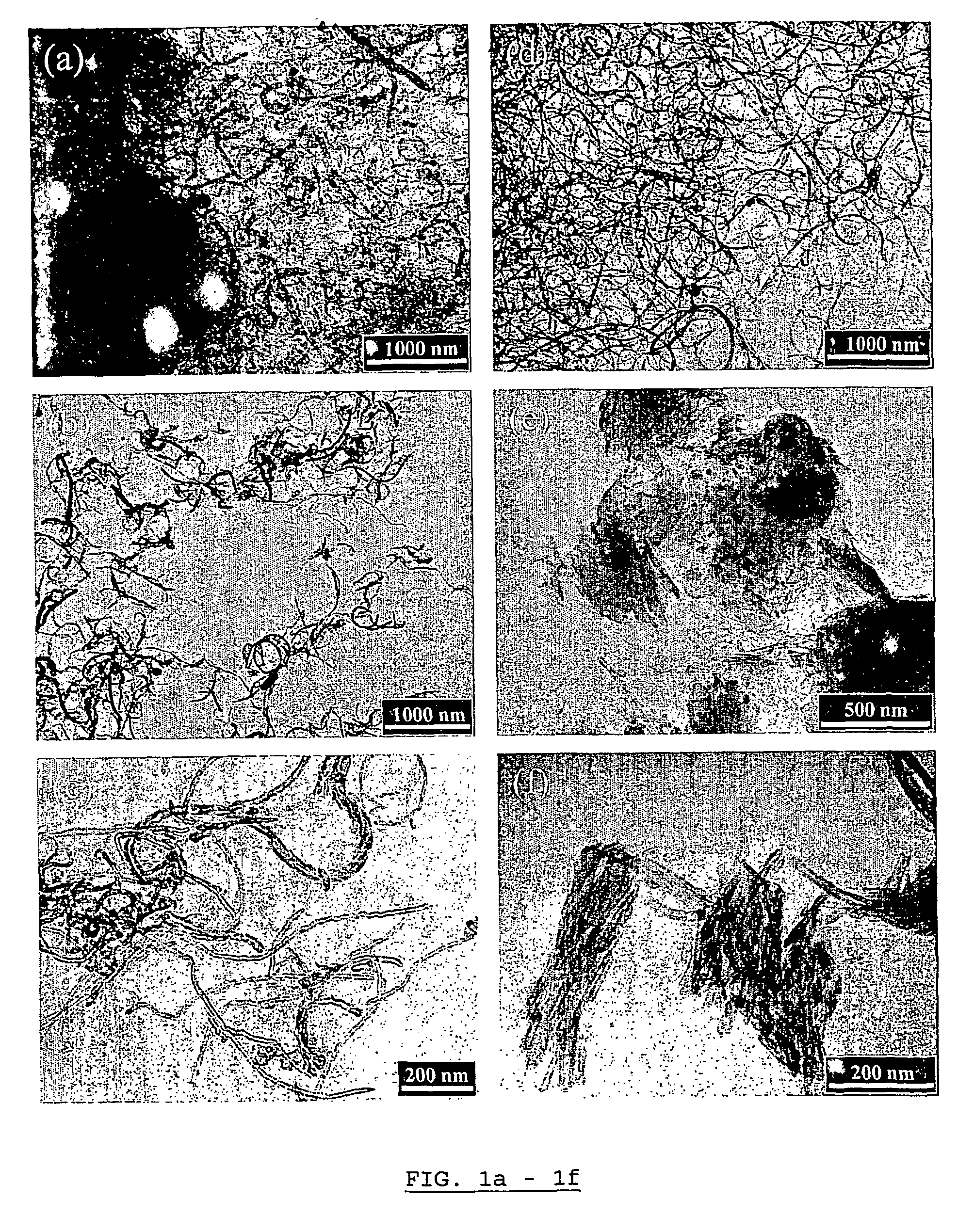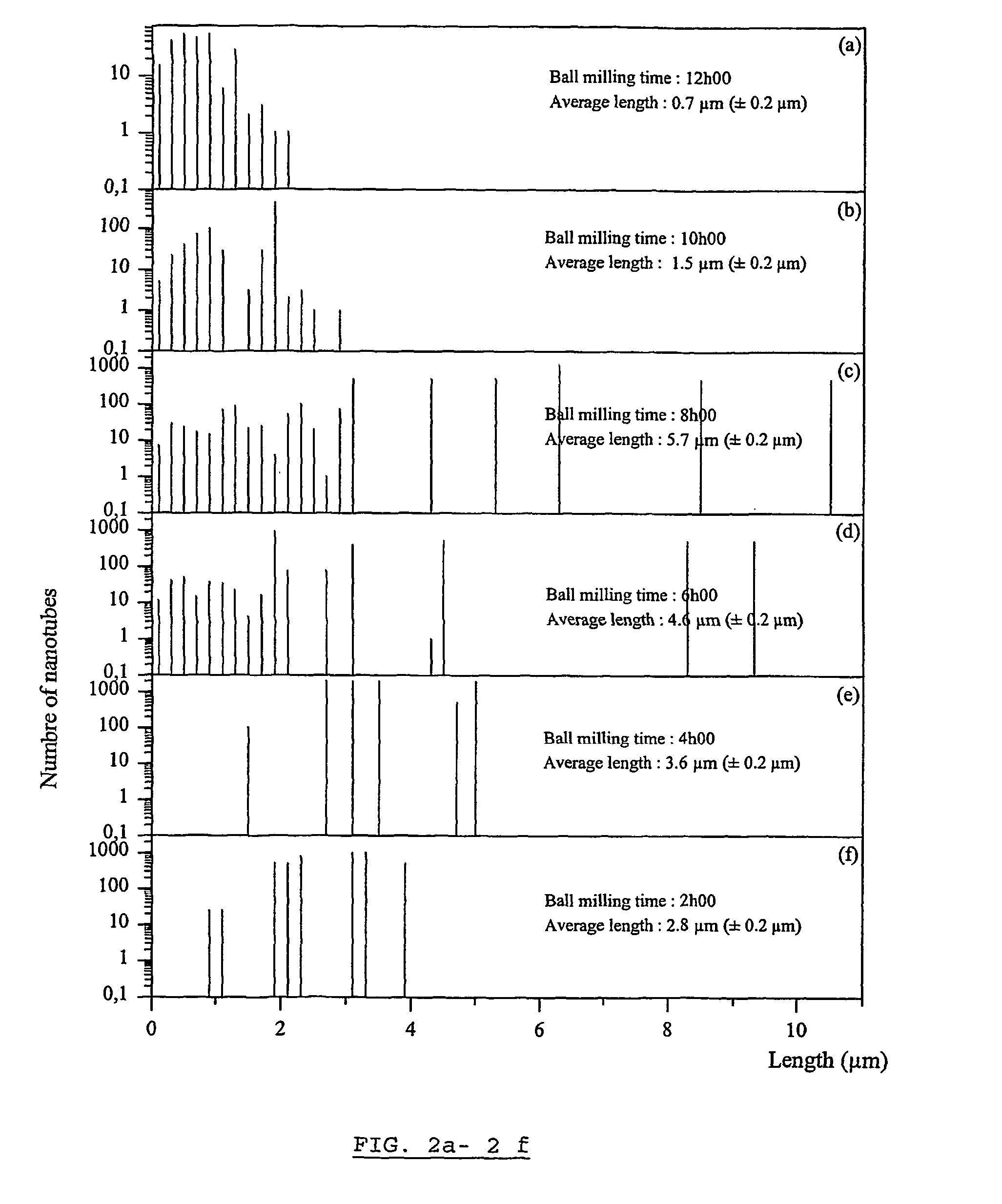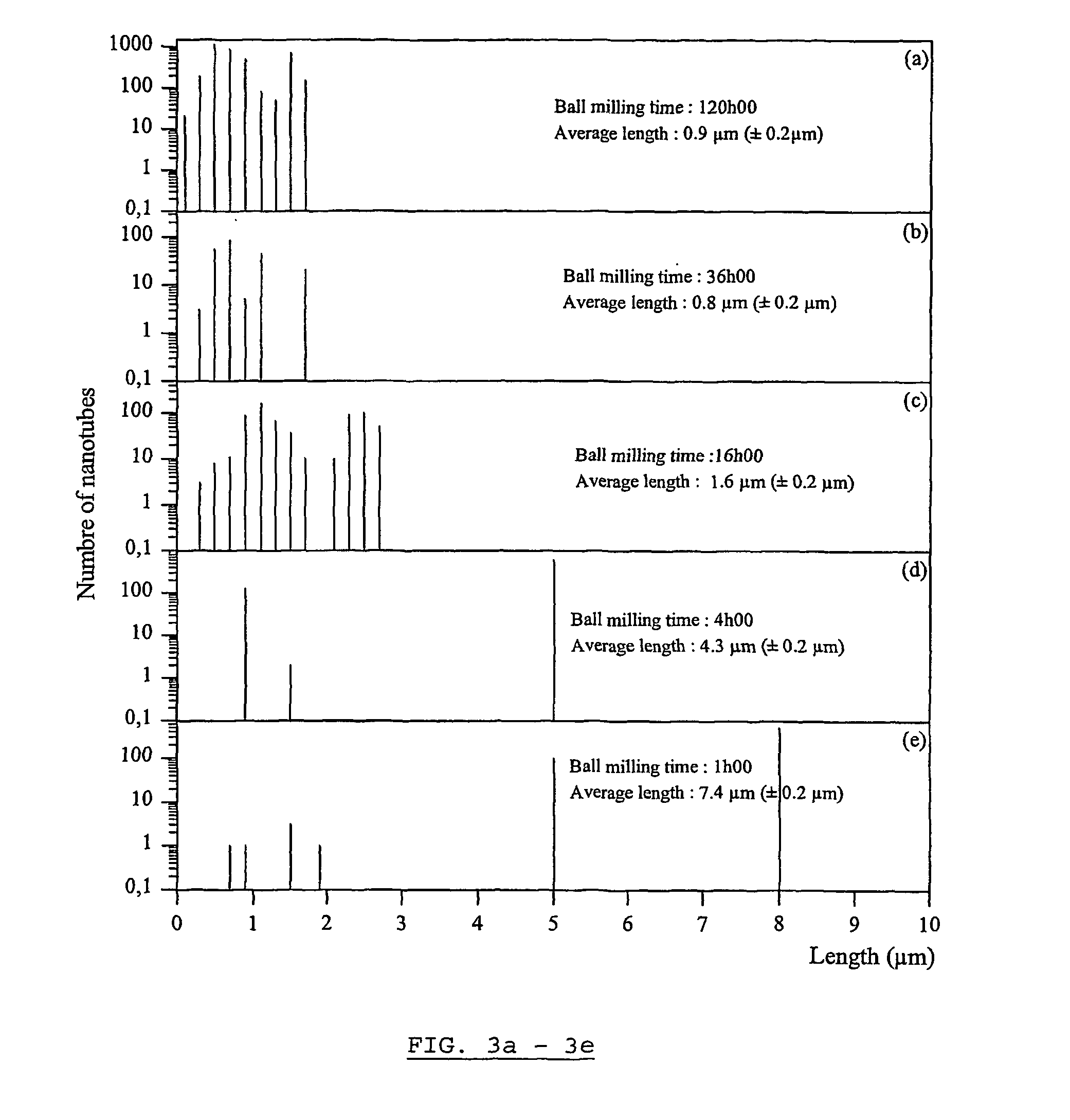Method for the production of functionalised short carbon nanotubes and functionalised short carbon nanotubes obtainable by said method
- Summary
- Abstract
- Description
- Claims
- Application Information
AI Technical Summary
Benefits of technology
Problems solved by technology
Method used
Image
Examples
case 1
[0114] 2. MWNTs
[0115] Long very thin MWNTs were firstly synthesised according to the method described in the part entitled "Production of long carbon nanotubes", by catalytic decomposition of acetylene at 700.degree. C. using a mixture of Fe / Co 1.6% / 1.6% supported on Al.sub.2O.sub.3 as catalyst. The acetylene flow was 30 ml / min and N.sub.2 was used as carrier gas at a flow of 300 ml / min. The crude very thin MWNTs thus obtained were containing 80.2 wt % of carbon. They had closed tips, were approximately 10 .mu.m in length, had an average inner / outer diameter of 5 / 10 nm and had an average number of layers of 8.
[0116] Three samples were tested from these crude long MWNTs:
[0117] sample 1 containing long MWNTs as such;
[0118] sample 2 and sample 3 wherein 4 g fractions of long MWNTs were submitted to ball milling according to the method of the invention during 24 hours.
[0119] The three samples, sample 1, sample 2 and sample 3, were studied for their He and H.sub.2 adsorption abilities a...
PUM
 Login to View More
Login to View More Abstract
Description
Claims
Application Information
 Login to View More
Login to View More - R&D
- Intellectual Property
- Life Sciences
- Materials
- Tech Scout
- Unparalleled Data Quality
- Higher Quality Content
- 60% Fewer Hallucinations
Browse by: Latest US Patents, China's latest patents, Technical Efficacy Thesaurus, Application Domain, Technology Topic, Popular Technical Reports.
© 2025 PatSnap. All rights reserved.Legal|Privacy policy|Modern Slavery Act Transparency Statement|Sitemap|About US| Contact US: help@patsnap.com



